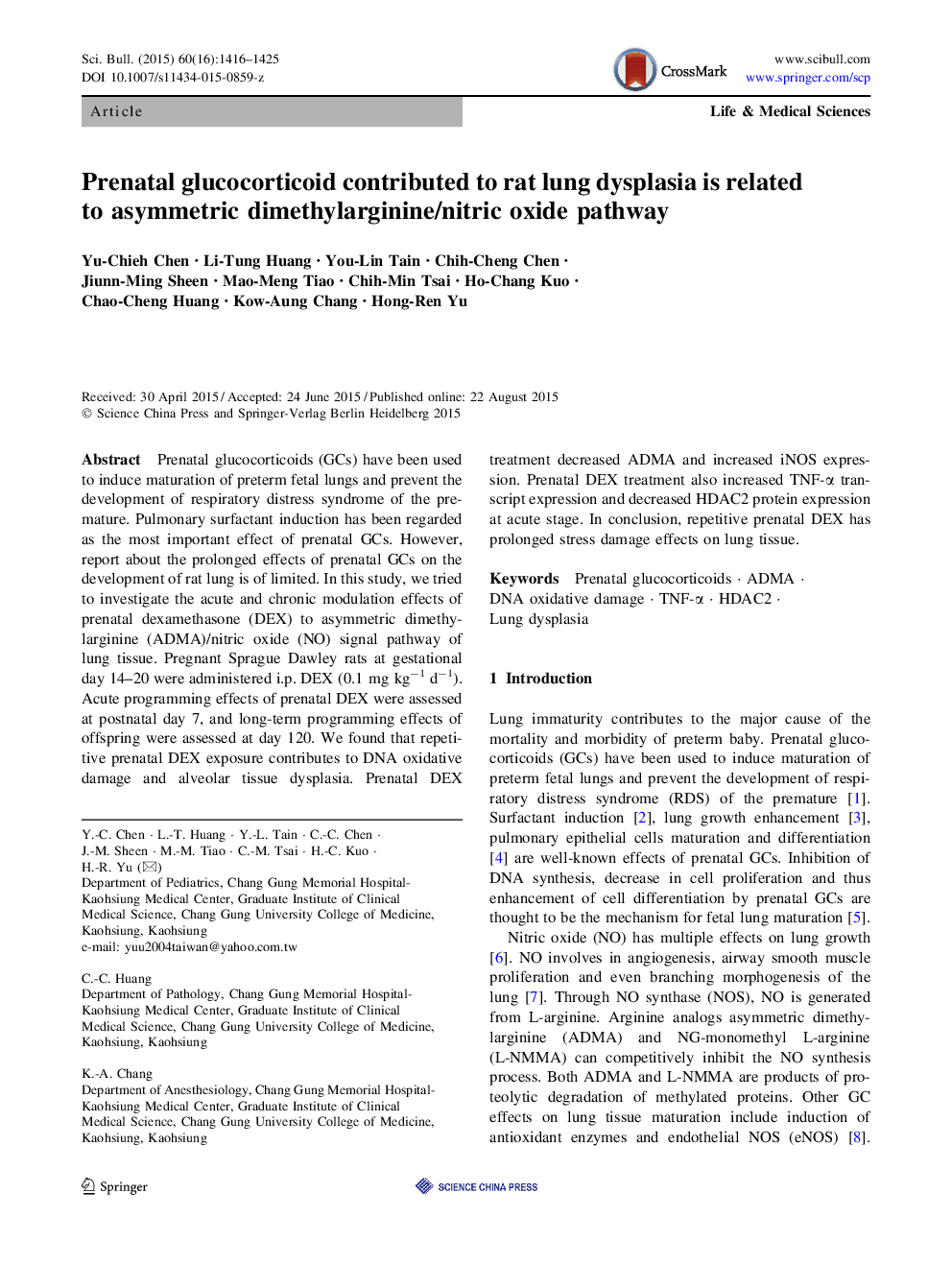| Article ID | Journal | Published Year | Pages | File Type |
|---|---|---|---|---|
| 5789193 | Science Bulletin | 2015 | 10 Pages |
Abstract
Prenatal glucocorticoids (GCs) have been used to induce maturation of preterm fetal lungs and prevent the development of respiratory distress syndrome of the premature. Pulmonary surfactant induction has been regarded as the most important effect of prenatal GCs. However, report about the prolonged effects of prenatal GCs on the development of rat lung is of limited. In this study, we tried to investigate the acute and chronic modulation effects of prenatal dexamethasone (DEX) to asymmetric dimethylarginine (ADMA)/nitric oxide (NO) signal pathway of lung tissue. Pregnant Sprague Dawley rats at gestational day 14-20 were administered i.p. DEX (0.1 mg kgâ1 dâ1). Acute programming effects of prenatal DEX were assessed at postnatal day 7, and long-term programming effects of offspring were assessed at day 120. We found that repetitive prenatal DEX exposure contributes to DNA oxidative damage and alveolar tissue dysplasia. Prenatal DEX treatment decreased ADMA and increased iNOS expression. Prenatal DEX treatment also increased TNF-α transcript expression and decreased HDAC2 protein expression at acute stage. In conclusion, repetitive prenatal DEX has prolonged stress damage effects on lung tissue.
Keywords
Related Topics
Physical Sciences and Engineering
Chemistry
Chemistry (General)
Authors
Yu-Chieh Chen, Li-Tung Huang, You-Lin Tain, Chih-Cheng Chen, Jiunn-Ming Sheen, Mao-Meng Tiao, Chih-Min Tsai, Ho-Chang Kuo, Chao-Cheng Huang, Kow-Aung Chang, Hong-Ren Yu,
